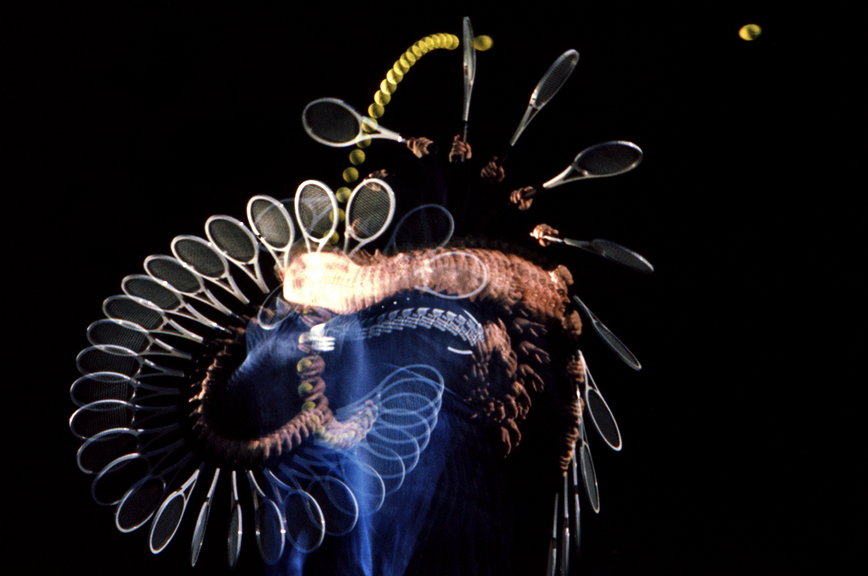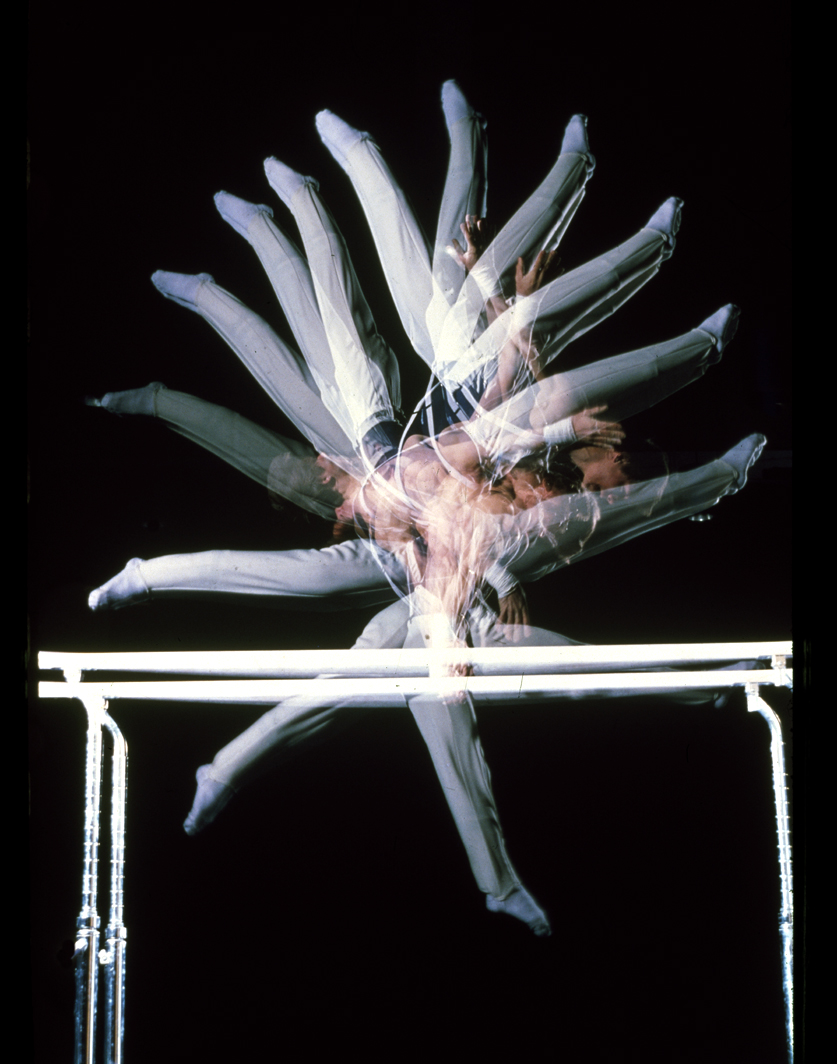INNOVATION
-
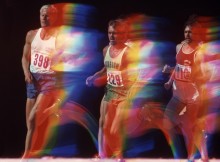 Steve Prefontaine, 1972
Steve Prefontaine, 1972
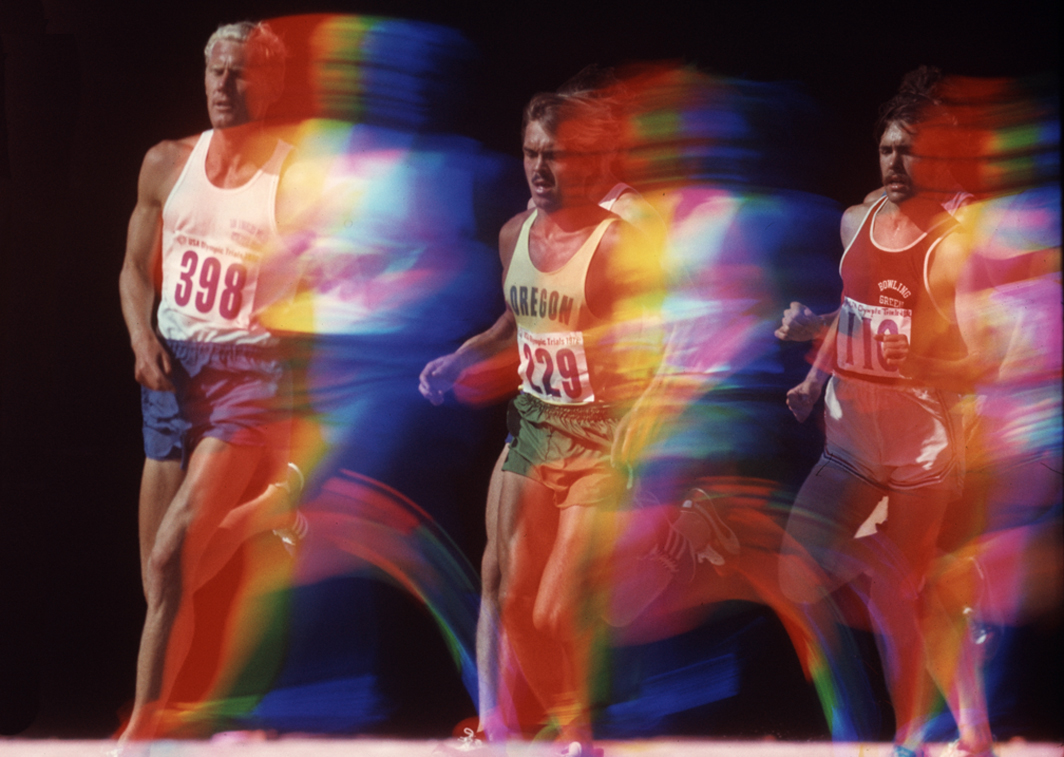
Steve Prefontaine, 1972
Close CloseThe following excerpt is from Masters of Contemporary Photography Zimmerman & Kauffman Photographing Sports.
Zimmerman employed the 35mm Hulcher with its two-slit shutter and used filters of different colors. He decided to try the same technique (as he had used with the photograph entitled “Javelin”) during a race at the University of Oregon in Eugene. The problem was to find a dark enough background with the sun in the right position for rim lighting. “I decided I had to build one up at the end of the track away from the start and finish lines, to avoid blocking the view of the spectators,” says Zimmerman. “I explained my notion to track coach Bill Bowerman, but I don’t think he fully understood. But he was interested enough to allow us to erect the background and make the pictures.”
The following excertp is from the Sharpshooter tribute to John Zimmerman
On Meeting Zimmerman in 1972 sports photographer Rich Clarkson said “I had known and admired him for years. Watching how he did things technically that no one had ever tried before such as modifying a Hulcher camera to produce beautiful pictures of runners with colors streaking from behind them as they ran. John did this at the Olympic trials in Eugene, Oregon and believe it or not, he put up a black background and lights on a curb and did this very stylized illustration during an actual competition. The pictures were beautiful.”
-
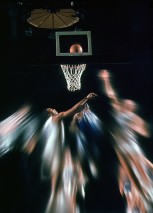 Basketball Fugue, 1958
Basketball Fugue, 1958
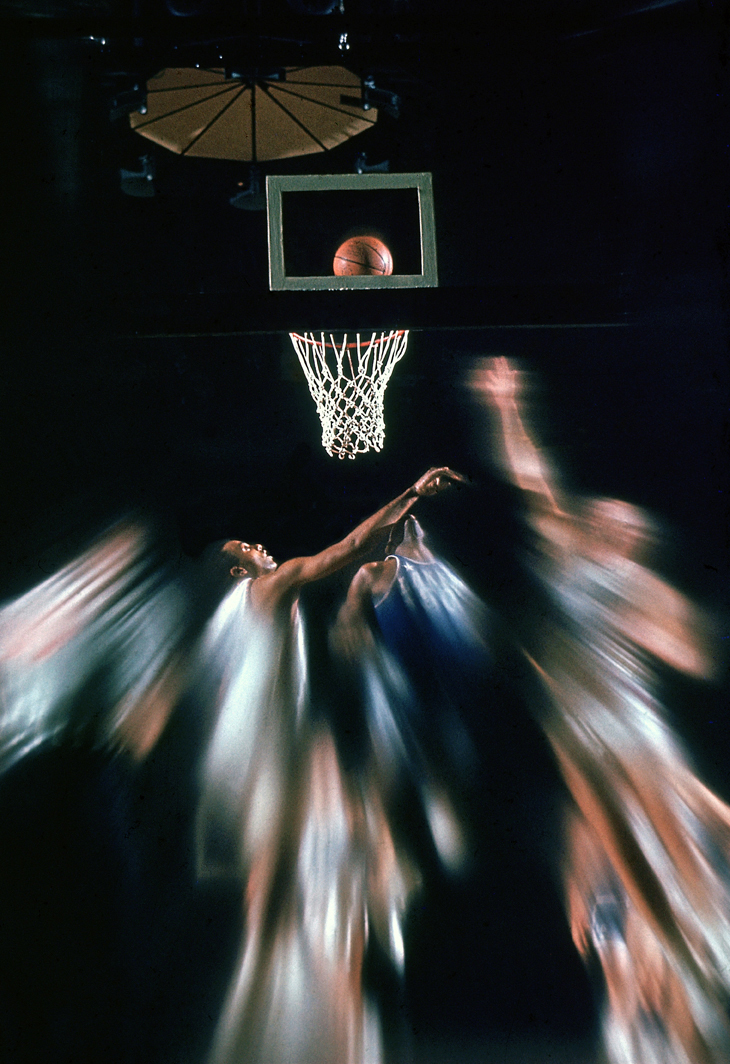
Philadelphia Warriors vs Syracuse at Madison Square Garden, 1958
Close Close Read MoreThe Fugue of color rising to the basketball backboard grew out of an old fashioned trick of shooting through a large 11 x 14 pane of glass that was placed in front of the camera and smeared with Vaseline. The advantage over a commercially-bought soft-focus filter or one handmade out of a skylight filter is that the photographer gets soft swirling colors while retaining some control. He can determine which area to keep clear, or whether to blur the edges, the top or the bottom half of the frame. By applying the Vaseline in patterns–circles, squiggles–he can create different effects.
The lighting is carefully designed to fall only on the players so as to create a deep black canvas, uninterrupted by confusing elements like spsectators, upon which Zimmerman paints the impressionist colors. “Sure it could be done in the darkroom afterwards with less margin for error,” Zimmerman admits. But that takes the excitement out of it for me. You get better color quality if it is done on the original film. And an accident in which the forms and colors come together with an image that goes beyond anything you could plan or execute in the darkroom.”
-
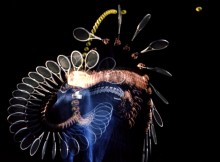 Vic Braden Serving, 1977
Vic Braden Serving, 1977
-
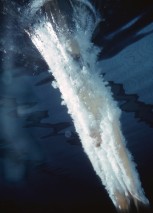 Bobby Clotworthy, 1957
Bobby Clotworthy, 1957
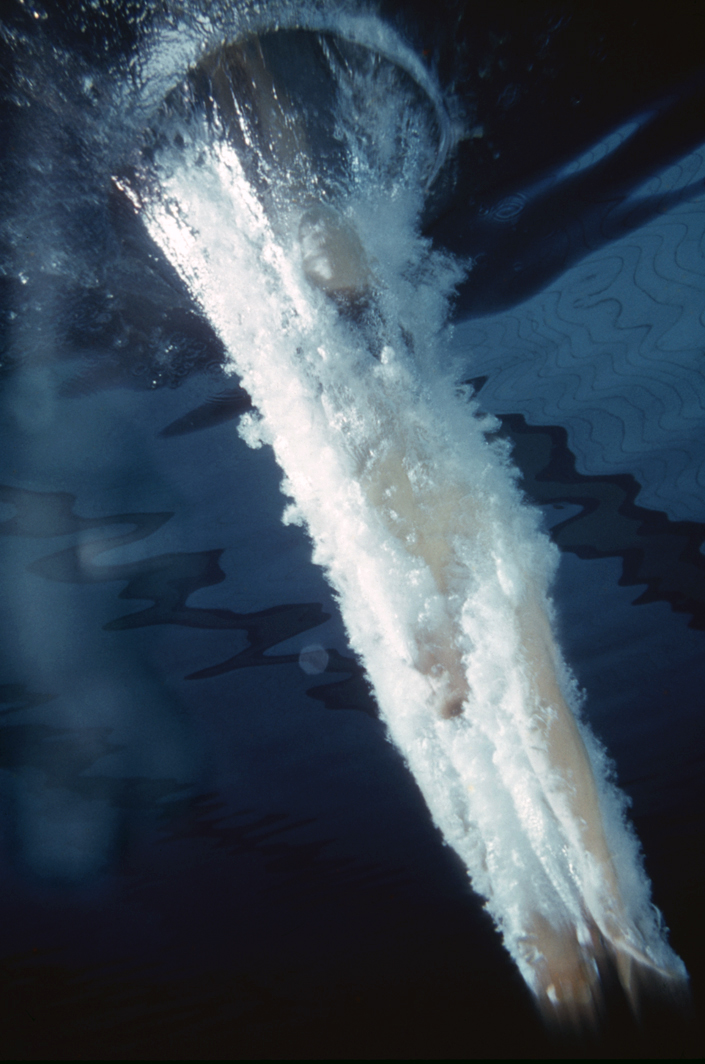
Olympic Gold Medalist Bobby Clotworthy, 1957
Close Close Read MoreThe following excerpt is from Masters of Contemporary Photography Zimmerman & Kauffman Photographing Sports.
An assignment to capture the impact of Olympic gold medalist Bobby Clotworthy as he struck the water required just as much ingenuity. To get sufficient illumination from the right direction, both above and below the water in the Princeton University pool, Zimmerman placed lights in large aquarium tanks for underwater illumination and more lights on aluminium scaffolding above the water.
With everything in position, Zimmerman then began what proved to be a demanding exercise. He had to go underwater to make the photograph but he had to move very slowly and hold his breath because any bubbles released by him would interfere with the Clarity of Clotworthy’s impact upon the stilled water. The photographer could not use a scuba device either, because that also produced bubbles.
As Zimmerman slowly slid under the surface, Coles Phinzy, the writer on the story, signaled Clotworthy to dive. As soon as he knifed the water, Zimmerman tripped the shutter and himself shot to the surface, gasping for air. Today, architects design pools with subsurface windows in the walls for observation by coaches or photographers. But there was no such easy route available for Zimmerman then.
-
 Kurt Thomas, 1979
Kurt Thomas, 1979

